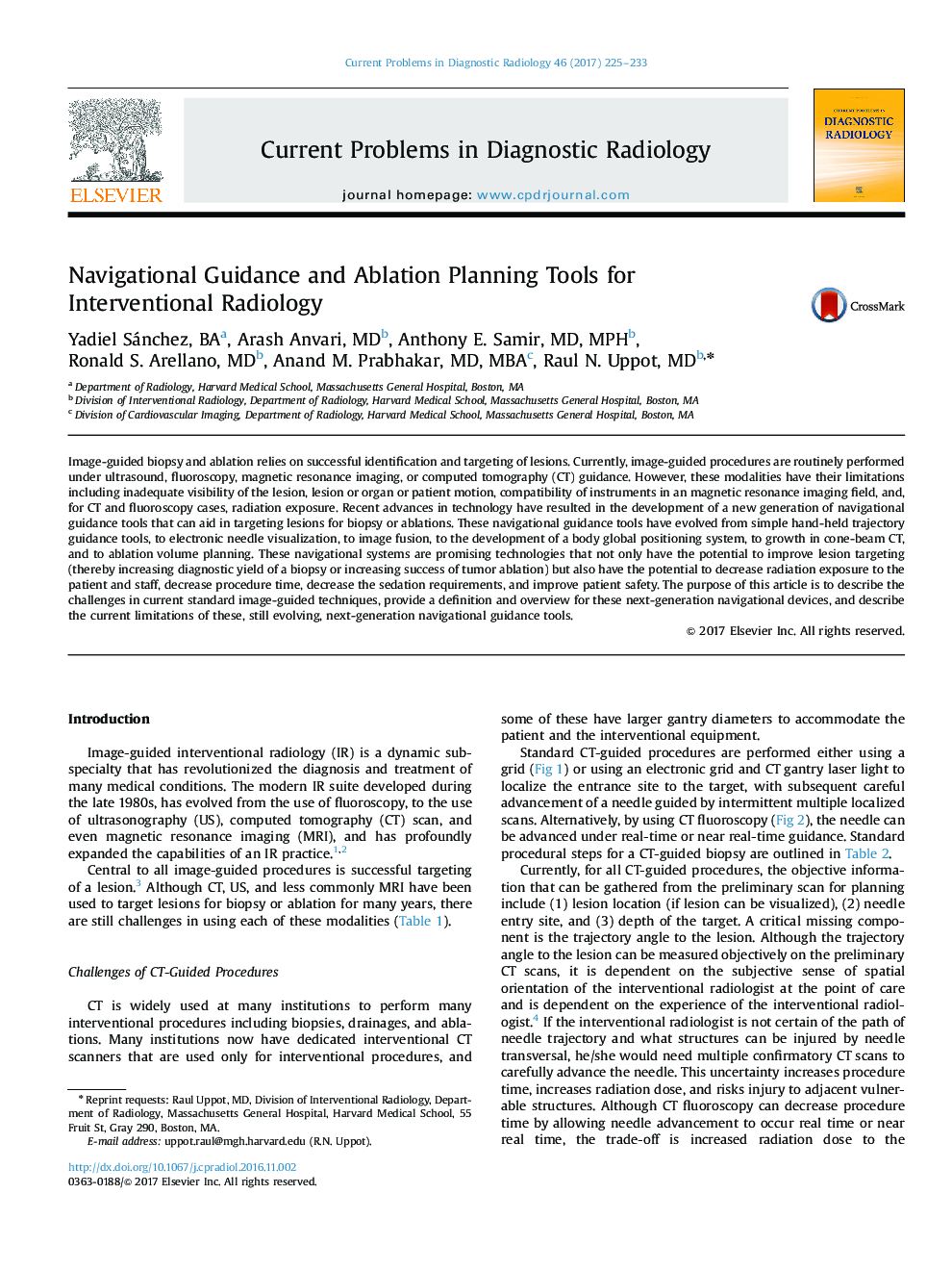| Article ID | Journal | Published Year | Pages | File Type |
|---|---|---|---|---|
| 5725948 | Current Problems in Diagnostic Radiology | 2017 | 9 Pages |
Image-guided biopsy and ablation relies on successful identification and targeting of lesions. Currently, image-guided procedures are routinely performed under ultrasound, fluoroscopy, magnetic resonance imaging, or computed tomography (CT) guidance. However, these modalities have their limitations including inadequate visibility of the lesion, lesion or organ or patient motion, compatibility of instruments in an magnetic resonance imaging field, and, for CT and fluoroscopy cases, radiation exposure. Recent advances in technology have resulted in the development of a new generation of navigational guidance tools that can aid in targeting lesions for biopsy or ablations. These navigational guidance tools have evolved from simple hand-held trajectory guidance tools, to electronic needle visualization, to image fusion, to the development of a body global positioning system, to growth in cone-beam CT, and to ablation volume planning. These navigational systems are promising technologies that not only have the potential to improve lesion targeting (thereby increasing diagnostic yield of a biopsy or increasing success of tumor ablation) but also have the potential to decrease radiation exposure to the patient and staff, decrease procedure time, decrease the sedation requirements, and improve patient safety. The purpose of this article is to describe the challenges in current standard image-guided techniques, provide a definition and overview for these next-generation navigational devices, and describe the current limitations of these, still evolving, next-generation navigational guidance tools.
